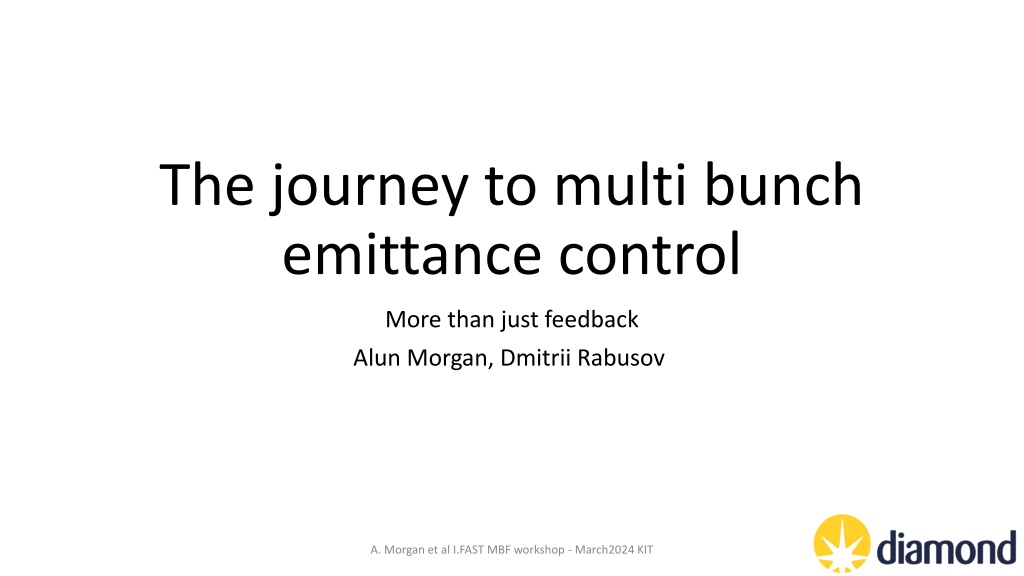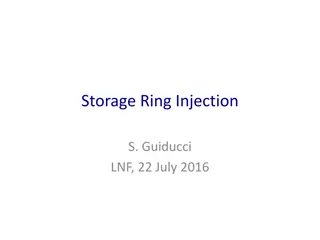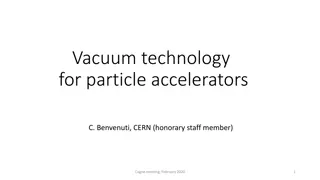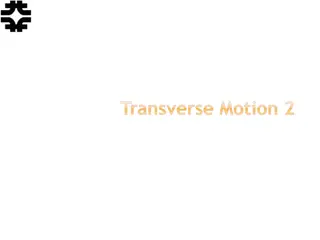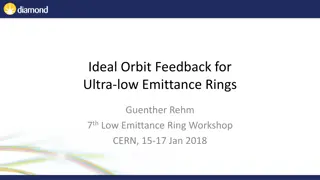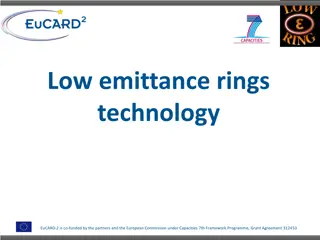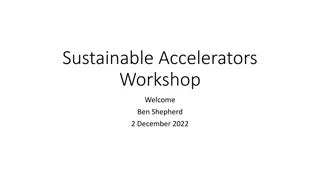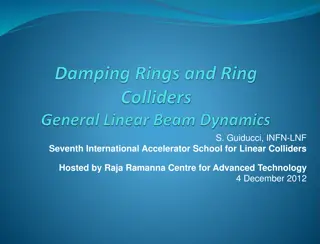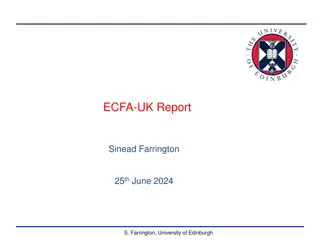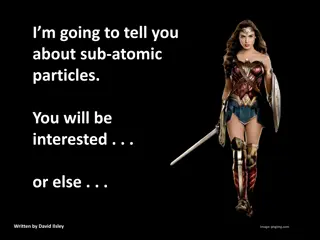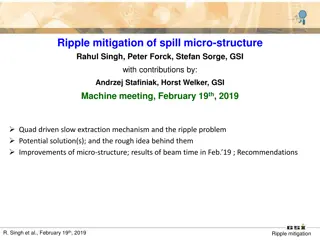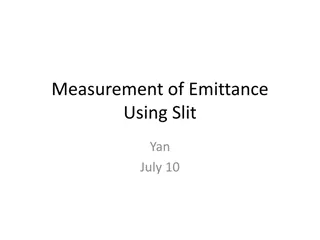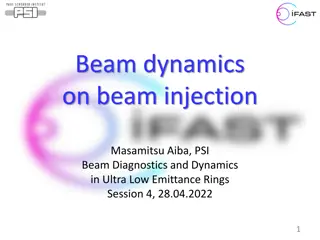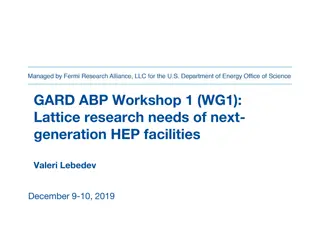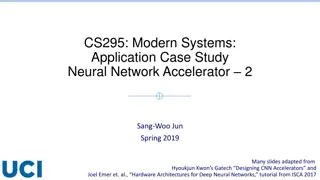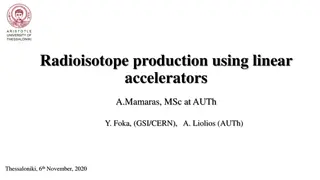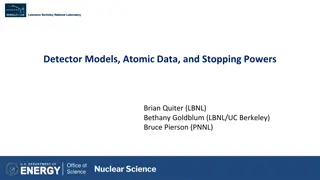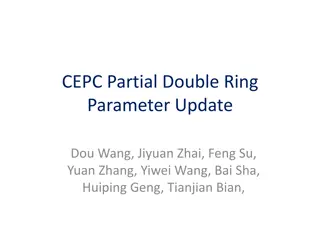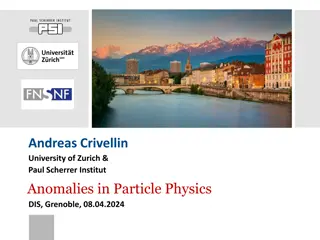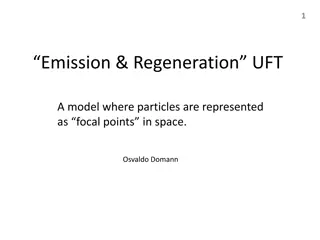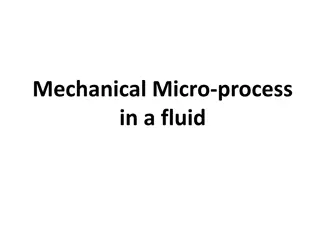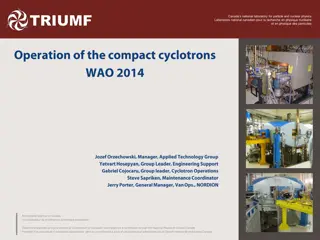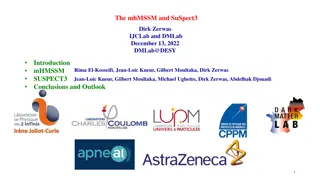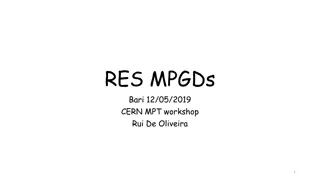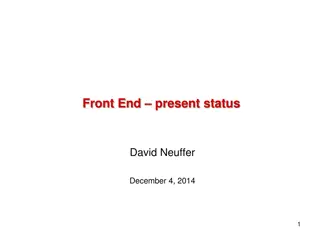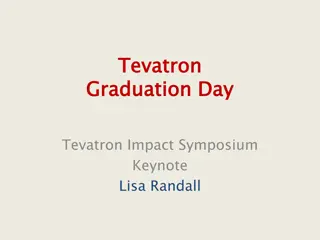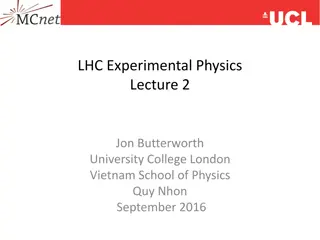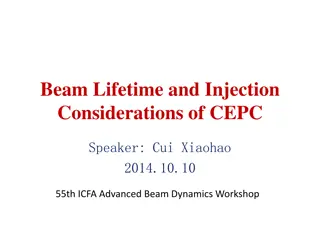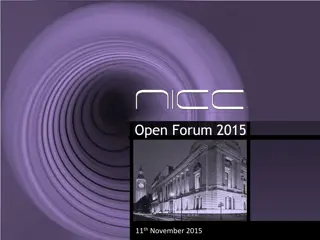Enhancing Emittance Control Strategies in Particle Accelerators
The journey to multi-bunch emittance control goes beyond mere feedback mechanisms, involving nuances like pinhole cameras as detectors and skew quadrupole magnets as actuators. This innovative approach aims to overcome limitations of existing systems like coupling control issues and hysteresis performance degradation. The addition of sideband excitation with the Multi Bunch Feedback (MBF) system offers promising benefits without requiring new hardware, providing more flexibility in emittance control for operations. The new approach suggests replacing the actuator in the feedback loop with an oscillator, necessitating a new feedback controller algorithm. Tune tracking becomes crucial in Diamond accelerators for practical sideband excitation. Overall, these advancements in emittance control strategies promise improved operational efficiency and performance in particle accelerators.
- Emittance Control
- Multi-Bunch Feedback
- Particle Accelerators
- Accelerator Technology
- Feedback Mechanisms
Download Presentation

Please find below an Image/Link to download the presentation.
The content on the website is provided AS IS for your information and personal use only. It may not be sold, licensed, or shared on other websites without obtaining consent from the author. Download presentation by click this link. If you encounter any issues during the download, it is possible that the publisher has removed the file from their server.
E N D
Presentation Transcript
The journey to multi bunch emittance control More than just feedback Alun Morgan, Dmitrii Rabusov A. Morgan et al I.FAST MBF workshop - March2024 KIT
1 of 15 What do we do now Feedback loop using pinhole cameras as detector and skew quadrupole magnets as actuators Desired emittance Feedback actuator (skew quadrupole magnets) Pinhole camera Emittance calculation Feedback calculation Pinhole camera Beam Beam A. Morgan et al I.FAST MBF workshop - March2024 KIT
2 of 15 Why not just keep doing that? Additional Diamond-II considerations Limitations of existing system It cannot stabilise horizontal and vertical emittance simultaneously as it is coupling control based. Small reduction in dynamic aperture Suffers from hysteresis performance degrades over time Feedback loop limited to a few Hz due to pinhole camera update rate. We will not have the flexibility to use the skew quadrupole magnets due to the impact on off axis injection Operating modes in Diamond-II may require per bunch size manipulation. (e.g. hybrid bunch) A. Morgan et al I.FAST MBF workshop - March2024 KIT
3 of 15 Why use side band excitation with the MBF? Additional MBF bonuses Sideband excitation No new hardware required in the storage ring. This allows the emittance control to be applied to all or a subset of bunches as operations require. It has less impact on lifetime and injection efficiency compared to the existing skew quadrupole approach Emittance Control for Diamond-II Ian Martin, Alun Morgan, Shaun Preston 9th Low Emittance Rings Workshop CERN, 13th-16th February 2024 There are some differences in behaviour which need to be accounted for before it can be used in operation. A. Morgan et al I.FAST MBF workshop - March2024 KIT
4 of 15 What is the new approach? Keep the existing emittance monitoring but replace the actuator of the feedback. Desired emittance Pinhole camera Part of the control loop replaced an oscillator controlled by and part of the multi bunch feedback system. Emittance calculation Feedback calculation Feedback actuator Pinhole camera Beam A new feedback controller algorithm is required Beam A. Morgan et al I.FAST MBF workshop - March2024 KIT
5 of 15 Tune tracking In Diamond we need to use tune tracking to make sideband excitation practical Excitation at fixed frequency and amplitude Tune and sidebands jitter in frequency Frequency jitter is converted into a variation in effectiveness and so beam size variation We may not need this in Diamond-II due to the 3rdharmonic cavity. A. Morgan et al I.FAST MBF workshop - March2024 KIT
6 of 15 Tune tracking limitations Machine change has broken the tune tracking twice since 2020 Unable to identify the causes 2020 multivalued solutions 2023 unexpected phase shift The past Retuned the entire system Developed improved locking scheme A. Morgan et al I.FAST MBF workshop - March2024 KIT
7 of 15 MBF emittance feedback development Initial proof of concept done in 2020 by Guenther Largely manual but looked promising. Various issues identified in operating alongside standard operation, for example: Making sure the target bunch is filled The need to turn off the feedback on the few bunches either side of the tracking bunch No feedback Magnet feedback ID gap MBF feedback MBF actuator Emittance Basically, it allowed us to define the problem much more clearly. A. Morgan et al I.FAST MBF workshop - March2024 KIT
8 of 15 Development of a new MBF vertical emittance feedback algorithm Existing skew quadrupole base algorithm Much of the controller is related to the magnet dynamics and so needs to be redeveloped to use the MBF system instead error r Dynamic controller Scalar controller Emittance measurement F MBF based algorithm (tested September 2022) Operational proof of concept No dynamic adjustment of parameters so currently it takes too long to stabilise after ID changes. error Target Emittance measurement Scalar controller A. Morgan et al I.FAST MBF workshop - March2024 KIT
9 of 15 Testing the simple emittance control Standard deviation over a few mins in the stable state: Response rate when changes occur: Magnet based system 8 s / pm rad No feedback 0.030pm rad Magnet based system 0.037pm rad MBF system 29 s / pm rad MBF system 0.060pm rad Next step is to use proper systems analysis to develop a full feedback model A. Morgan et al I.FAST MBF workshop - March2024 KIT
10 of 15 Broader considerations TheMBF system will become machine critical in more ways. MBF focussed Accelerator focussed Improving our assessment of the working point stability. Identifying the impact of various machine settings. Improving our understanding of the impact of MBF setting changes. Assessing and developing new operational uses of the MBF system. o PPRE o Bunch cleaning o Emittance feedback Integrating all the different operating modes to work together in various combinations. A. Morgan et al I.FAST MBF workshop - March2024 KIT
11 of 15 Broader studies Pulse Picking by Resonant Excitation for use with 'timing users' An alternative to hybrid fill. o Feasibility study in collaboration with one of our beam lines Lifetime without Compromise doi: 10.18429/JACoW-IPAC2023-MOPM036 S. Wilkes Investigations into operating Pulse Picking by Resonant Excitation (PPRE) in the vertical plane doi: 10.18429/JACoW-IPAC2023-MOPM037 S. Wilkes, A. Morgan, G. Karras, I. Martin, M. Warren Machine measurement Beamline measurement A. Morgan et al I.FAST MBF workshop - March2024 KIT
12 of 15 Broader studies settings optimisation Simulation Measurement Emittance feedback for the Diamond-II storage ring using resonant excitation doi:10.18429/JACoW- IPAC2022 - TUPOMS035 S. T. Preston , T. Olsson, B. Singh Measured impact of chromaticity and bunch charge Measurements for emittance feedback based on resonant excitation at Daimond light source doi:10.18429/JACoW-IBIC2022-WEP37 S. T. Preston , T. Olsson, A. Morgan , L. Bobb The Asymmetry of the peaks and the sensitivity with excitation harmonic indicates that long-range wakefields have a significant impact. Including the impedance causes a broadening and shifting of the sidebands as well as showing the asymmetry similar to the measured data. A. Morgan et al I.FAST MBF workshop - March2024 KIT
13 of 15 Broader studies further investigation of excitation harmonic modes Dependencies investigated so far Fill pattern Excitation amplitude Beam current Tune excitation with equivalent charge per bunch. Single bunch Full fill Signal integrated over the beam depends on excitation mode A. Morgan et al I.FAST MBF workshop - March2024 KIT
14 of 15 Broader studies Measuring the effects of MBF bandwidth on feedback robustness tune scans at I = 150 mA around the current working point Shorter filter Wider bandwidth Longer filter Narrower bandwidth A. Morgan et al I.FAST MBF workshop - March2024 KIT
15 of 15 Future work and questions Develop an improved feedback algorithm Measurement studies Single bunch operation - To better separate the effect of long and short range wakefields. Find a more optimal accelerator setup with minimal sideband driven centroid motion Can this residual centroid motion be mitigated by the multi-bunch feedback ? Noise measurements Simulation Understand the effects of a 3rd harmonic cavity Include both short and long range wakefields Where does the noise floor variation with excitation mode come from? Questions Experience with 3rd harmonic cavity Experience with ramped / booster operation Experience with Amplifiers A. Morgan et al I.FAST MBF workshop - March2024 KIT
